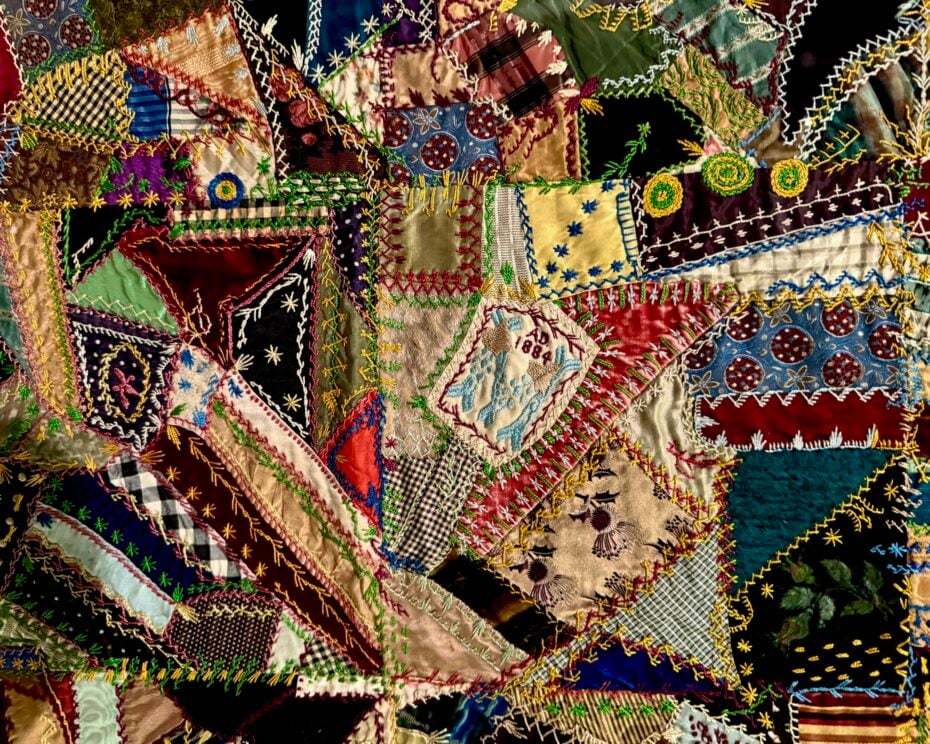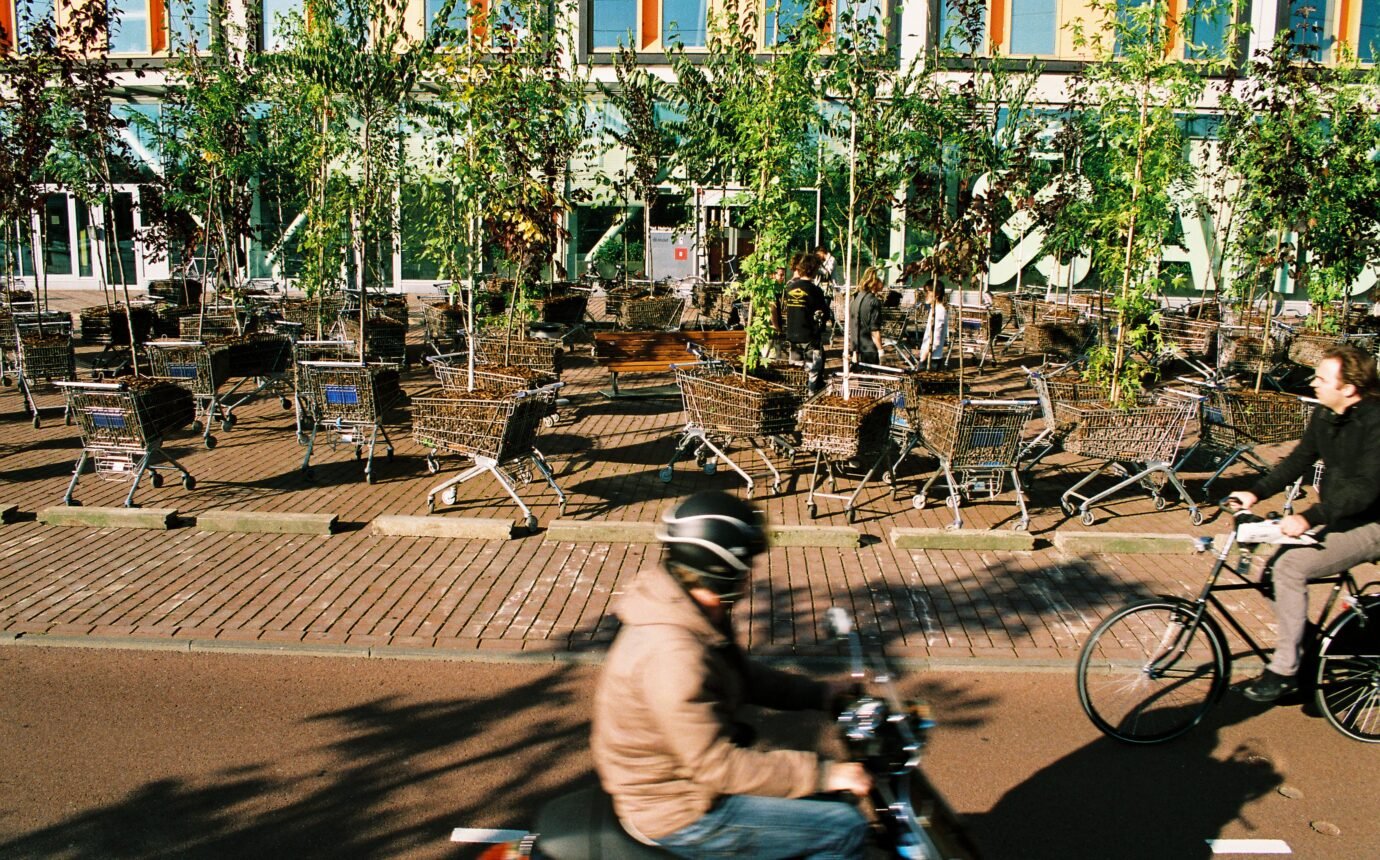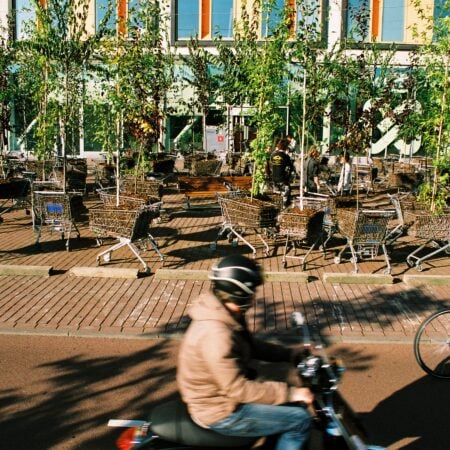Design Lessons from the ROM’s Latest Exhibition

Quilts: Made in Canada celebrates the artistry of quilting and patchwork in Canada
Walking through the Royal Ontario Museum’s new exhibition, Quilts: Made in Canada, we learn three fundamental teachings stitched into the storied art form. In exploring the museum’s collection of rarely displayed Canadian-made quilts dating as far back as the 1850s, it’s clear to see how design has played a role beyond functionality, but as an expression to share stories and histories.
In a preface to the art forms inherent creativity, Quilts: Made in Canada showcases three large works with three common patterns—the Irish Cross, Double Irish Cross and Log Cabin—and an interactive area where visitors can create their own patterns.
These preliminary quilts depict the time, patience and care required to stitch each fabric patch within a greater pattern. Each piece acts as a visual representation of the maker’s ingenuity, presenting their ability to transform simple shapes into a larger, more complex pattern.
As you gaze upon each work in this expansive exhibition, patterns begin to resemble motifs and pictures that have been used to capture a memory or moment in time. This section of the show acts as a visual and textural contradiction, the comfort we associate with quilts is replaced with a strong sense of symbolism as each piece becomes a medium to communicate historical (and often challenging) experiences.
Quilts like The Tree of Peace Saves the Earth and Haudenosaunee Passport portray the injustices faced by Canada’s Indigenous community—reflecting on political action and inaction alike.
Likewise, the Casey House remembers the lives lost at Toronto’s HIV/AIDS hospice. The memorial quilt is from 1991, the same year Princess Diana took the hands of patients in her own and challenging the social stigma around HIV and AIDS during that time.
Familial history is the centre of the exhibit‘s final component wherein each patch of fabric communicates beliefs, status and traditions.
An array of marriage quilts highlights the history of Canadian families and a tradition taken up by the girls who are expecting marriage. These quilts document family life in the 1800s and the opportunity to document the pattern-making techniques of these young women.
This section also showcases pieces made by women over the last 200 years, reflecting preserved traditions and family closeness. The designs range from maximalist, like the Crazy Quilt by Mrs. Thomas Murray, to focused, like the floral Marriage Quilt by Catherine Gage Pettit and her family. The meticulous patterns, sometimes including initials and photographs, serve as visual documentation of familial histories, meant to be cherished across generations. Often ending up as beloved, worn fabrics, quilts represent our past, present, and future. The patched pieces added over the years document each generation, capturing a work’s nature to be reused and remade.
Like many of the ROM’s curated exhibitions, Quilts: Made in Canada offers a valuable look at Canadian history through the artistry and design of quilts. The show portrays the ingenuity, community, and familial tradition embedded in the art form. Here, design is crucial to the quiltmaker’s ability to create complex patterns, express political statements, or participate in family traditions.
Visiting the exhibit evokes a feeling of nostalgia that perfectly matches the comforting atmosphere and Canadian motifs. While among the quilts, it is easy to get lost in the sheer amount of detail and dedication it takes to create one. Quilts: Made in Canada highlights the quiet beauty held in the countless stitches and memories of those who have come before us.




















